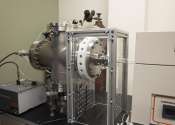Researchers simulate helium bubble behavior in fusion reactors
One of the most important challenges for successful commercialization of fusion power is the development of materials that can tolerate the extreme conditions of elevated temperatures and high particle flux of hydrogen isotopes ...








